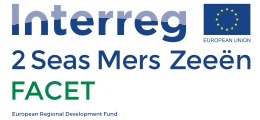Circular economy
Circular entrepreneurship in the tourism sector
What is circular entrepreneurship?
We only have one planet. We overconsume natural resources such as water, fish, crude oil, timber and minerals. These resources are needed to make food, fuel, accommodations, and raw materials to manufacture a broad range of products. When managed well, consumed renewable resources could be restored in a short time. As the total amount of available resources decreases, the more expensive such materials become. The majority of resources used today however are non-renewable and are set to become increasingly scarce based on the current rising demand and unsustainable consumption.
Circular entrepreneurship is a way of doing business based on a product lifecycle standpoint in which sustainable actions such as the reuse of natural resources, raw materials, and manufactured products are being maximized in minimizing the loss of its value. As an example, in circular entrepreneurship discarded products can be re-used or brought back to raw material (in an environmentally friendly manner) to manufacture new products.
Integrating circular entrepreneurship into the tourism sector is essential, as tourism involves mass consumption of natural resources, putting a strain on natural resources and raw materials. According to the UN World Tourism Organization, tourism along the 2 Seas coastline will increase by 5 to 8% in the coming decades. As a result, mass consumption of natural resources such as water and oil, land degradation and use increases over time. This puts pressure on the already limited resources in the region. Circular entrepreneurship can offer solutions in retaining and increasing the number of resources used and needed within the tourism sector.
Circularity is a common goal. A circular economy based on a circular product lifecycle is not just one producer who changes one product; it is about collaboration between connected companies and institutions who jointly transform their current (most commonly), linear business models, into a circular one. In support of a network, companies become more innovative and inspired to create new revenue models collectively.
In the context of circular entrepreneurship in the tourism sector, you can for example rethink the design and choice of materials in building new touristic accommodations, or rebuilding existing structures. Another example is to analyze your waste stream to identify possibilities for reusing food waste; imagine transforming discarded mussel shells of a restaurant into a new product. But also reducing water consumption, and optimizing energy use, are example circular business practices.
Example goals in circular entrepreneurship are to reduce the consumption of natural resources and raw materials, thereby reducing waste, and finding alternatives for the current use of non-renewable resources. Many circularity strategies exist, as ordered by priority according to their levels of circularity and impact. Within the FACET-project, these circularity strategies are linked to the concept of “circular value chains” in making them more tangible and applicable to an entrepreneurs business. More information? Click on the link: https://www.projectenportfolio.nl/wiki/index.php/FACET_Tool_PR_00001
